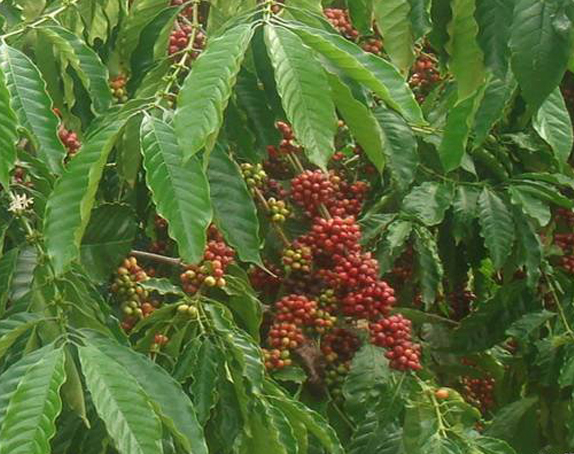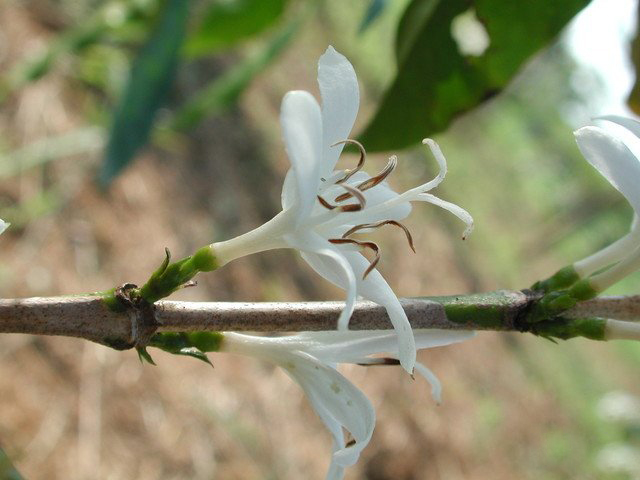Basic knowledge of introduction to Coffee
The best growing area for coffee is between 25 degrees north latitude and 30 degrees south latitude. This region includes the heartland of many countries and parts of South America, Colombia, Africa, India, Asia, the Middle East and Hawaii.
At present, there are about 70 coffee-producing countries, most of which are located in areas with an elevation of 300,000,400 meters above sea level, and coffee trees are sometimes cultivated on highlands of 2000,000m above sea level. Those planted on slopes above 1500 meters above sea level are of better quality. But the most suitable condition for growing coffee is an area with an average annual rainfall of 1500mur2000 centimeters and an average temperature of about 20 degrees and no frost. There are many different kinds of coffee trees in the world, but the most commonly planted and widely drunk are Arabica and Robbins specialties.

Arabica is the more difficult of the two, but the quality and taste of coffee beans are the best of all coffee drinks. It is often purchased by coffee shops and provided for coffee lovers to drink. Robbins specialty coffee is easier to grow, but of poor quality, although it has a short growing period and can be widely grown. But these characteristics also make Robbins specialty coffee popular in barren coffee-growing areas. Robbins specialty coffee is also often used in coffee blending, instant coffee production, and sometimes by merchants to reduce the cost of commercial blending.
Good coffee grows in coffee plantations, from small plantations to large plantations with millions of coffee trees. It takes three to five years from planting coffee seeds to ripening coffee, especially Arabian species. At first, the seeds were planted in the cultivation bed and were not transplanted into the coffee garden until a year or a half later. Coffee trees can grow up to 20 feet tall, but they are usually controlled at about 6 feet.

Coffee trees will bloom for six months, and when they bloom, there will be a fragrance of jasmine in the air. After about 6 months, the red berries are ripe and ready to be picked. If Rain Water is rich in a year, coffee will blossom and bear fruit at the same time. In such a season, conscientious coffee workers will pick coffee fruits from the same coffee tree by hand again and again. Another method is machine picking: one-time picking, including flowers, ripe coffee fruits and immature coffee fruits will be picked at the same time. This picking method will reduce the quality of coffee under certain circumstances.
Important Notice :
前街咖啡 FrontStreet Coffee has moved to new addredd:
FrontStreet Coffee Address: 315,Donghua East Road,GuangZhou
Tel:020 38364473
- Prev

Illustration of espresso menu
Espresso is a kind of coffee made by using Italian coffee machine through the use of Italian coffee beans. Italian baristas pour steam-heated milk into Italian coffee to form the more popular cappuccino coffee in China. in the eyes of most domestic baristas, the pull on the surface of cappuccino is better than the coffee itself.
- Next

10 different ways to drink coffee
1. Italy: it is a kind of espresso in a small cup, which can be cooked and drunk quickly. People who have been in contact with the coffee for a long time can get used to its heavy taste. 2. France: the French prefer light coffee, which is generally made from moderately roasted and roughly ground coffee beans by soaking. I like to drink it with chicory root. 3. UK: coffee powder is usually filled
Related
- Beginners will see the "Coffee pull flower" guide!
- What is the difference between ice blog purified milk and ordinary milk coffee?
- Why is the Philippines the largest producer of crops in Liberia?
- For coffee extraction, should the fine powder be retained?
- How does extracted espresso fill pressed powder? How much strength does it take to press the powder?
- How to make jasmine cold extract coffee? Is the jasmine + latte good?
- Will this little toy really make the coffee taste better? How does Lily Drip affect coffee extraction?
- Will the action of slapping the filter cup also affect coffee extraction?
- What's the difference between powder-to-water ratio and powder-to-liquid ratio?
- What is the Ethiopian local species? What does it have to do with Heirloom native species?

